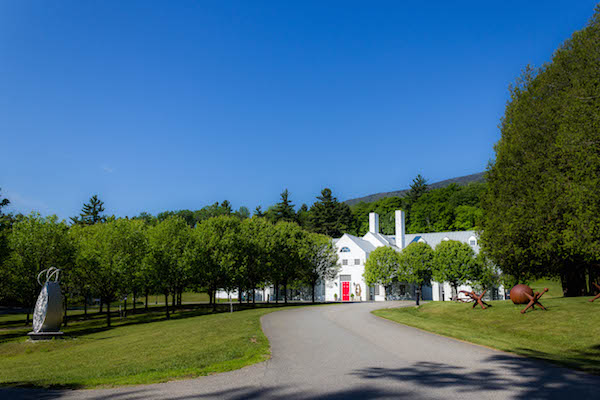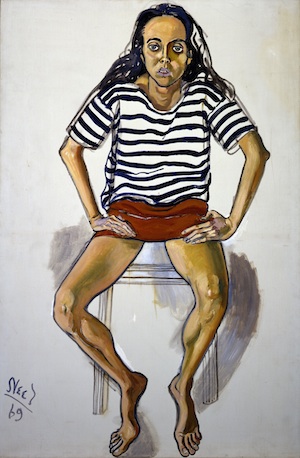Bottom Line: The pivotal role of the arts in the Southern Vermont economy
By Tricia N. Hayes
Laugh, cry, learn, and see anew.
For decades, the arts have added definition and inspiration to the Southern Vermont landscape.
Landscapes, still-life paintings, and abstract interpretations have told the story of the rolling fields and softly shaped mountains for generations. Think Ralph Earl and his panoramic view of Bennington from 1798, a classic in the art world in early townscape painting; fast-forward 200 years, and you have the canvases and sculptures of Ken Noland, David Smith, and Pat Adams. Vibrant performing arts, from the classics to the experimental are celebrated on stages in Southern Vermont.
To keep the arts afloat, government organizations, private patrons and attendees at events need to offer their support. The contributions of the arts to the economy can provide a stimulus to the community through spending on dining, lodging and shopping. Receipts from each sector add to the tax coffers and help to underwrite the creative economy.

Southern Vermont Arts Center in Manchester, one of many regional arts organizations involved in Hills Alive SO Vermont, a year-round celebration of the arts
The inseparability of arts from economics has gained some new visibility recently as the Vermont Arts Council marks its 50th-anniversary milestone this year by saluting the contribution of the creative workforce to the region’s bottom line.
Alex Aldrich, executive director of the Vermont Council on the Arts, said that “the arts in Vermont are both widely dispersed and broadly diverse, and represent a critical component of the state’s economy.”
Aldrich called Southern Vermont “an important gateway for tourists” and said the region represents the state’s creative culture well, “with a strong concentration of high quality performing and visual arts,” citing the Dorset Players, the Bennington Museum, and the Vermont Jazz Center.
The contribution of the arts to the regional economy is significant.
“During the school year, we have some 80 parents of 40 students who clearly take advantage of local restaurants,” says Ariel Rudiakov, the artistic director of the Manchester Music Festival, which marks its 41st year in 2015, points out that synergy.
“Throughout our year-round concert activity, we partner as aggressively as possible with area inns, hotels, and restaurants to encourage musical ’stay and play,’” he says. “In the summer, we also have our young resident ensembles performing in certain local establishments, making them excellent ambassadors for the arts as they draw direct attention to what we do.”
Steve Stettler, producing artistic director of the Weston Playhouse Theatre Company, points out that the arts economy offers “an opportunity to incubate and create to develop a new vibrancy.
“It will encourage younger families to relocate,” Settler says. “The arts culture and education will help us grow.”
Increased collaboration among arts groups is contributing to a healthy arts scene, says Meagan Smith, Vermont Commissioner of Tourism and Marketing. Four years ago, Hills Alive So Vermont was launched as a a 10-day summer focus on theater, music, lectures, and films with the support of local businesses and the state’s Office of Tourism and Marketing. By year two, it had grown to a five-week celebration.
The program, which includes the Dorset Theatre Festival, Green Mountain Academy for Lifelong Learning, Manchester Music Festival, Northshire Performing Arts, Oldcastle Theatre Company, the Southern Vermont Arts Center, and the Weston Playhouse Theatre Company, now kicks off in the early spring and celebrates the arts throughout the year.
Explosion Bennington, another collaboration, 25 of the county’s arts organizations unveil their schedules to the press and public.
Greg Van Houten, immediate past chairman of the town of Bennington’s Selectboard and member of the Cultural Bennington Committee scheduled this “living press release” to display the arts’ impact to the media, hospitality, and real estate professionals.
Jumping on board with the effort: the Better Bennington Corporation, Bennington County Regional Commission, the town, and others.
“We have a vibrant arts community,” says Van Houten, proudly noting The Wall Street Journal’s listing the Bennington Museum as the site of one of the nine most memorable exhibitions of 2014 in North America — “quite an honor for our local arts and history institution.”
Big plans and big dreams are ahead for the Bennington Museum. Executive Director Robert Wolterstaff predicts that by 2025, the storied local institution will become a nexus for the creative economy.
“We will be a cool place to go, a place that feeds the soul and inspires innovation,” he says. “We will be a meeting place, a connector between creative people involved in the arts, industry, and medicine and by doing that will have an impact on the regional economy.”
For an institution long known as the home of an early Stars and Stripes and the folk-art paintings of Grandma Moses, this vision is a tall order, but it is looking to expand its scope without distancing itself from its local cultural heritage.
“The museum will still be a place that celebrates history, but our idea of history will be vastly expanded to include the innovations of the 1960s — or the 2010s and 2020s,” said Wolterstaff.
In a way, the Bennington Museum serves as a “gateway institution” to the state. It showcases what Vermont is all about. By telling the story of a culture of creativity that has flourished in southwestern Vermont, it attracts tourists and potentially converts them to residents.
The idea is to create an atmosphere that attracts entrepreneurs to put down root and start firms, Wolterstaff believes.
“Rather than understanding ourselves only as an institution that is about collecting and preserving and exhibiting, we think of ourselves even more importantly as an institution that is about serving our community,” he says. “Essentially, it is a change in mindset. It’s all about engagement.”
Public funding for the arts has been in a decline. Although the combined appropriations from federal government, states, and localities totaled $1.12 billion in 2012, that figure absorbs declines in these sources of funding ranging from 3 to 6 percent.
And as municipal budgets remain unbadged by an economic recovery, the future for public funding remains bleak.
To survive — let alone thrive — the arts need to be integrated into daily life. Survival for the arts means generating both money and intellectual capital. It relies on passionate patrons who attend concerts, donate to annual campaigns, and champion the goals of the institution in our communities.
But even as people have begun to acknowledge the value of the arts to the overall economy, over the past 20 years, public arts funding has also been increasingly hard to secure. At the same time, costs for productions have risen.
All that means keeping an eagle eye on one’s bottom line and an awareness of how people consume the arts.
In Bennington, Eric Peterson’s experiences span several decades. The producing artistic director of the Oldcastle Theatre Company, Peterson knows firsthand the financial pressure on nonprofits. With his location near the borders of New York and Massachusetts, he has his eye on potential patrons across state lines.
“The biggest portion of our audience comes from New York’s Capital District,” he says. “There are more people there than in the entire state of Vermont, so that isn’t really surprising. Our Berkshire audience last year was slightly smaller than the Southern Vermont audience. We are also doing better with tourists since moving downtown and already have booked groups from as far away as Washington D.C.”
When Oldcastle started 44 years ago, “the goal of regional not-for-profit theaters was to have 60 percent of revenue come from ticket sales and 40 percent come from so-called unearned income, such as contributions and grants,” he says. Now, the revenue from those sources is pretty much split evenly.
Peterson hopes investing in a new space will ultimately make the nonprofit less reliant on charity.
“We have a winter concert series that includes many musical genres, storytellers, theatre and children’s shows to round out the schedule,” he says. “That helps us to stay open bringing people to town and to have cash flow which is always needed.”
Alan Jordan, executive director of the Vermont Symphony Orchestra (VSO), which performs in all corners of the state, says, “For the coming season, we are at 44 percent earned to 56 percent contributed. That’s been pretty steady, but I would see contributed income making up more and more of our future budgets.”
Following on his theme of the arts being everywhere, Aldrich stressed, “there can be little doubt that the diversity and dispersion of the arts throughout Vermont are significant drivers of Vermont’s creative economy. Unlike other states, Vermont’s creative industries are scattered almost uniformly across the length and breadth of Vermont, with only a slight clustering in Chittenden County. This means that one doesn’t have to travel far in any direction to encounter or experience art works of high quality, at relatively affordable prices, all engaged in improving the economic and social quality of life in our Green Mountain State.”























































